50 retro trends we wish would make a comeback
Blasts from the homeware past
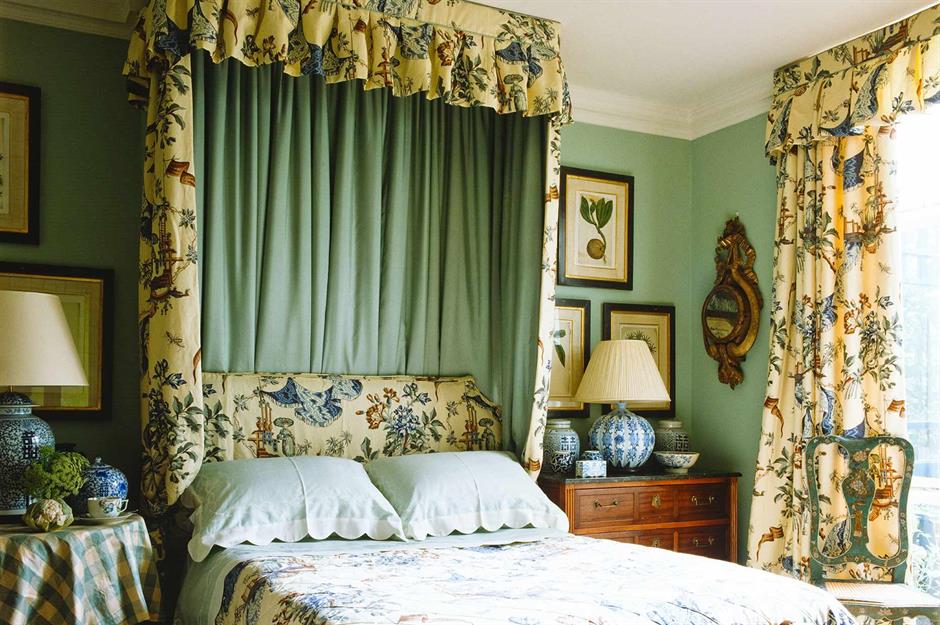
We all have a soft spot for antiques and vintage décor, but while we were glad to see the back of some home trends (think popcorn ceilings and net curtains), we'd welcome others back with open arms. Over the decades, many of our favourite interior treasures have fallen into obscurity, but there are plenty of amazing retro homewares that would be perfect for our 21st-century lifestyles.
Click or scroll on to discover the 50 iconic interior trends we want to revive...
Sunken seating areas
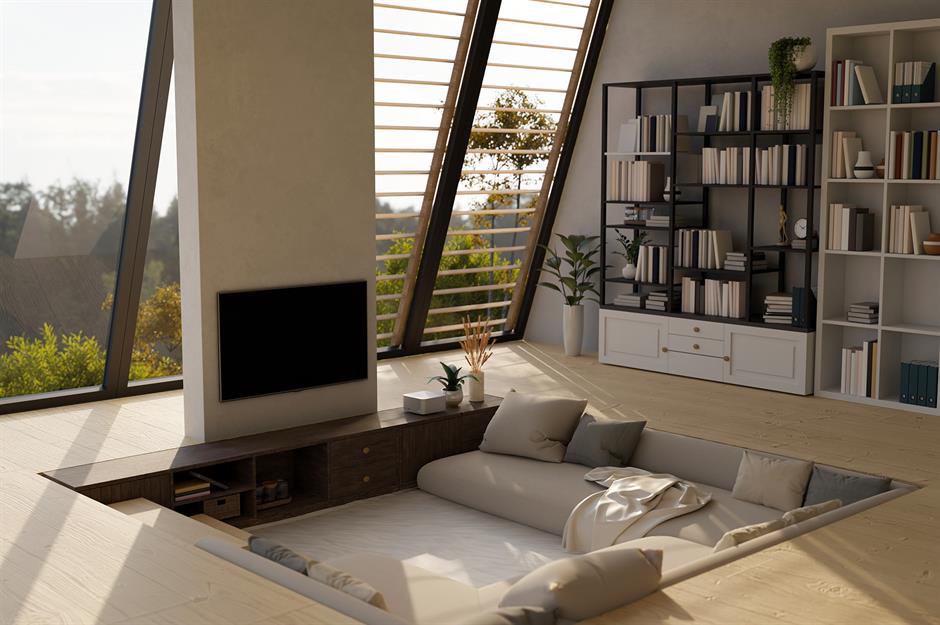
Conversation pits, which consisted of a recessed area lined with comfortable sunken sofas, were once ultra-hip and contemporary. Made popular by mid-century architects, they adorned 60s and 70s homes but fell out of favour in the 1980s and 90s.
But we think the cocooning effect is inviting and intimate. As this modern take demonstrates, it is ideal for hunkering down together and keeping warm in winter.
Garden swing seats
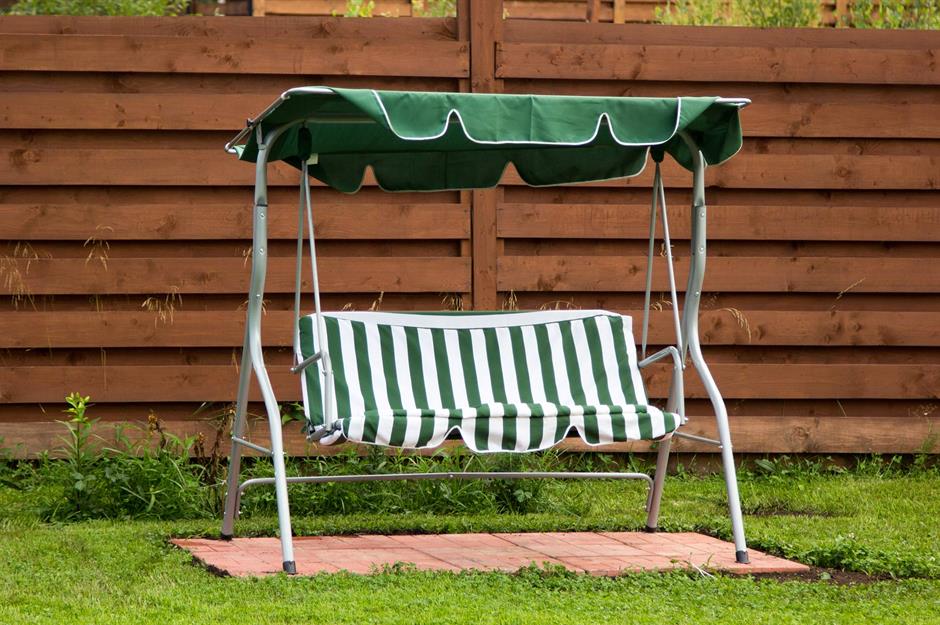
Remember those long hot summers when sprinklers were the main attraction for children in gardens, while parents gently swayed back and forth on swing chairs sipping on something cold? Some had striped upholstery while others boasted floral decorations. And if you were posh, the canopies and awnings might even be fringed.
These days you can make yours as rustic or as modern as you like – they've even been updated into cocooning swinging egg chairs. We love them, whatever the style!
Telephone tables
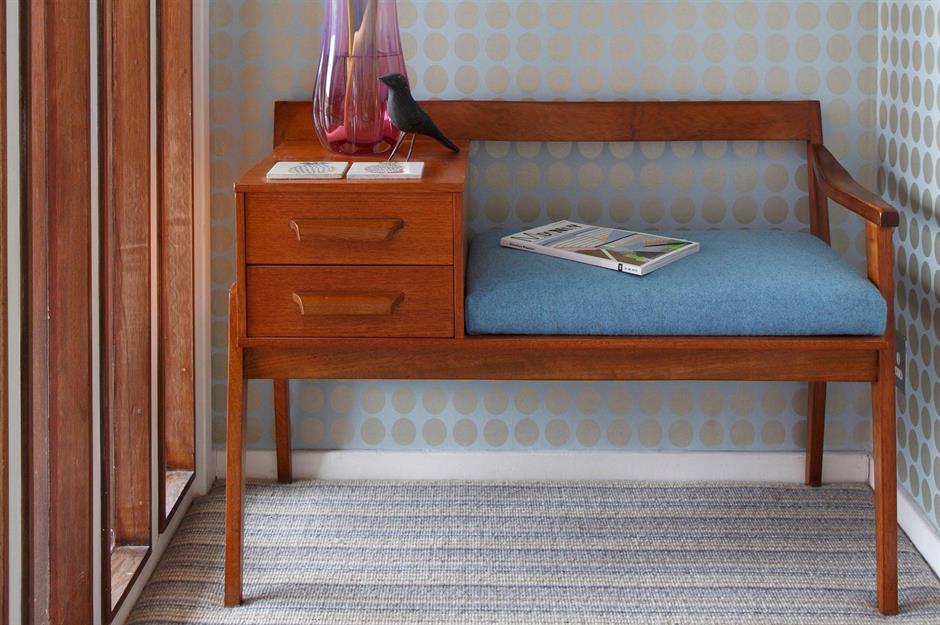
Sadly, cordless, cell and mobile phones have made the familiar hallway side table and bench redundant. The experience of spending phone calls to friends nestled on a comfy cushion while twirling a telephone cord around our fingers is now lost to history.
However, both stylish and practical, the retro-style furniture piece still has its uses for putting on shoes at the door and storing a few essentials, so we would like to see more of them in our hallways.
Geometric wallpaper
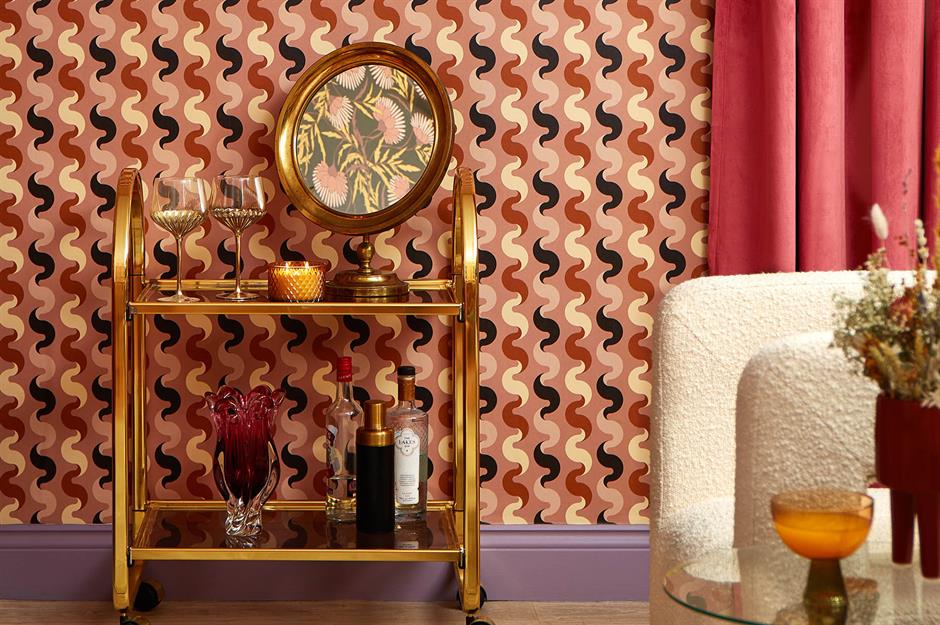
Feature walls decorated with geometric wallpaper were a 70s staple, and the more intense the pattern, the better.
This groovy wall covering perfectly captures those bohemian aesthetics, with its combination of caramel and pink colourways. Would you give it a go?
This retro wallpaper is from Lust Home.
Silk and satin sheets
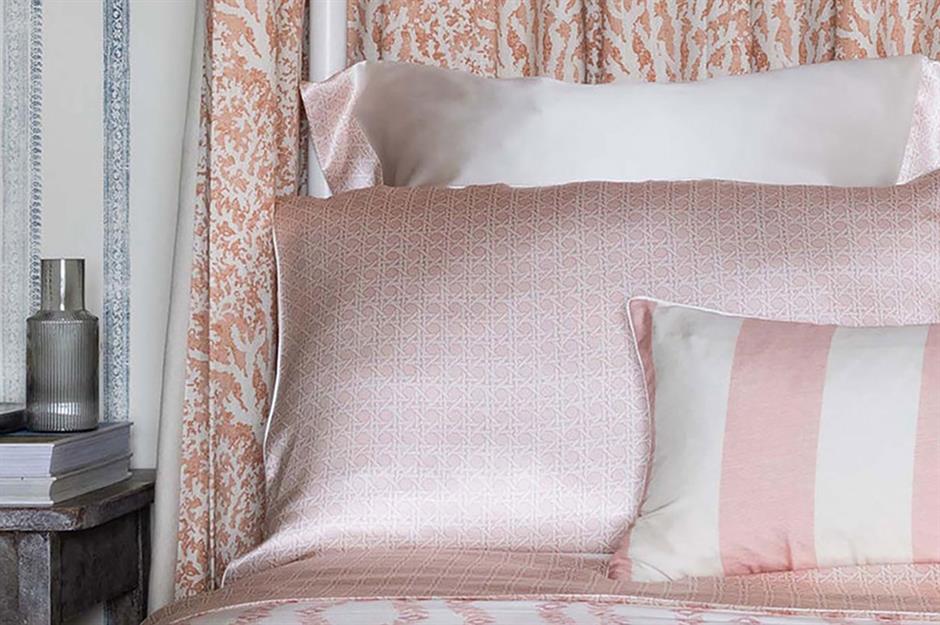
If satin and silk sheets remind you of cheesy bachelor pads of the 80s, think again. The delicate materials have been symbols of luxury for centuries, and with good reason.
Soft and hypoallergenic, these smooth materials are kind to your hair and are said by dermatologists to offer anti-ageing benefits for the skin, too, so it's time to reinvest.
This luxurous bedding is from Sweetpea & Willow.
Sputnik Chandeliers
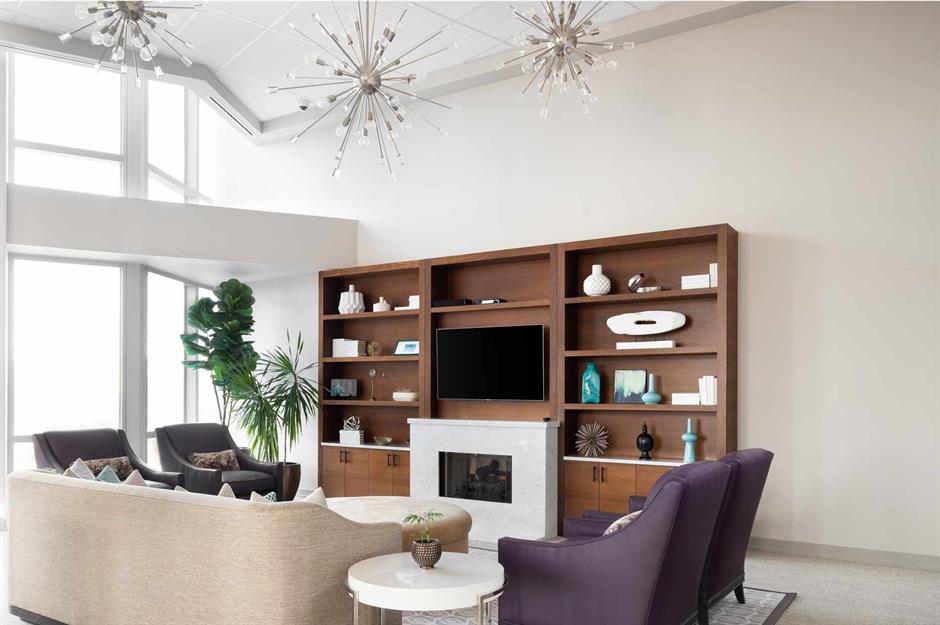
Credit for the first Sputnik-style chandelier goes to Italian designer Gino Sarfatti. Made in around 1939, the original Sarfatti 2003 (as it was called then) was actually designed 17 years prior to the launch of Sputnik 1.
During the 50s and 60s, the light fitting's similarity to the sphere-like satellite sparked an explosion of similar designs. The intergalactic vibe continues to orbit the interior planet today.
Heated hostess trolleys
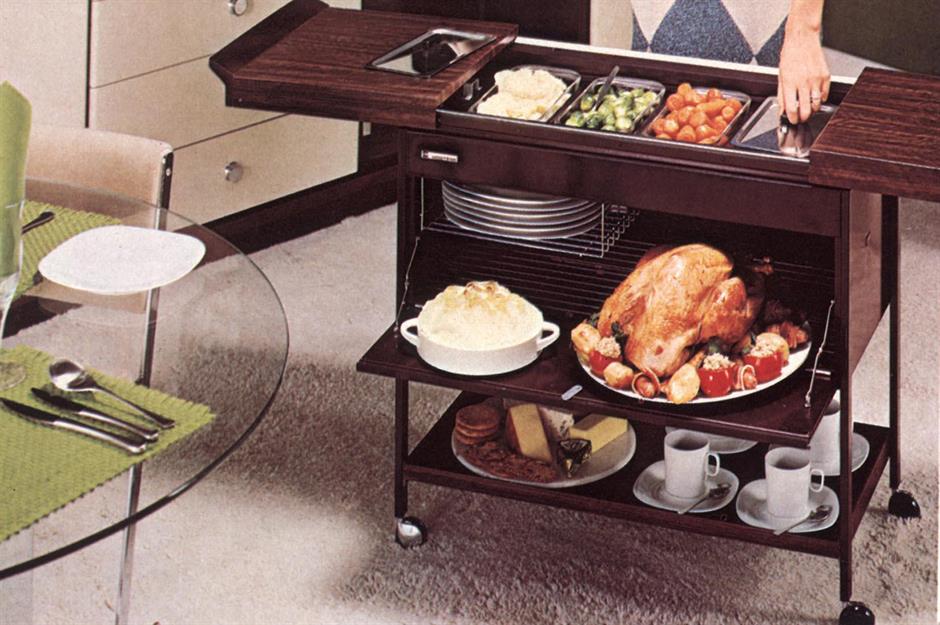
Dinner parties during the 70s and 80s were much less of a worry if you owned an electronically heated trolley. The idea was to prepare food well in advance, keep it warm and then serve it in front of your guests in the dining room, rather than constantly be haring in and out of the kitchen.
If you're not a fan of open-plan living, it may be time to dust off and roll out the practical food warmers once again!
Wallpaper borders
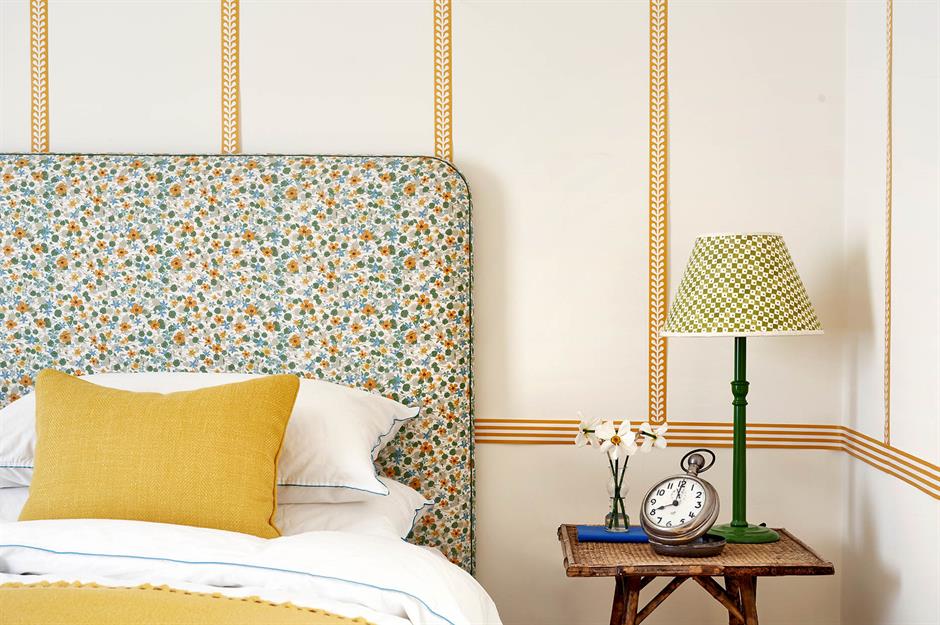
Chintzy floral bands have wrapped floral bedrooms and framed rich brown living rooms for many years, with the patterned edging adding an aesthetic wallpaper border to rooms, especially in the 80s.
With more up-to-date designs now in style, we think the embellishment will still work as a fine feature wall frame or two-tone painting effect finish, like this gorgeous example from Studio Atkinson.
Oversized table lamps
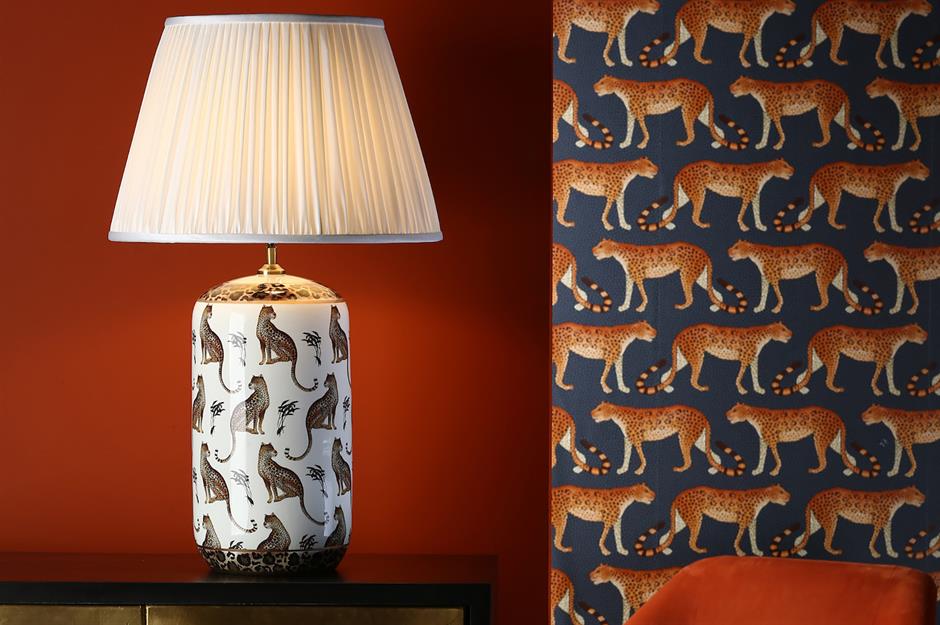
Big, bold and expressive was the lighting look of the 70s and 80, perhaps as a revolt against mid-century minimalism. An explosion of colour, shaped and novelty lamps lit up homes everywhere.
We've embraced oversized ceiling lighting, now we want to see plenty of sideboard exhibitionism too – like this funky lamp from där lighting.
Painted door frames
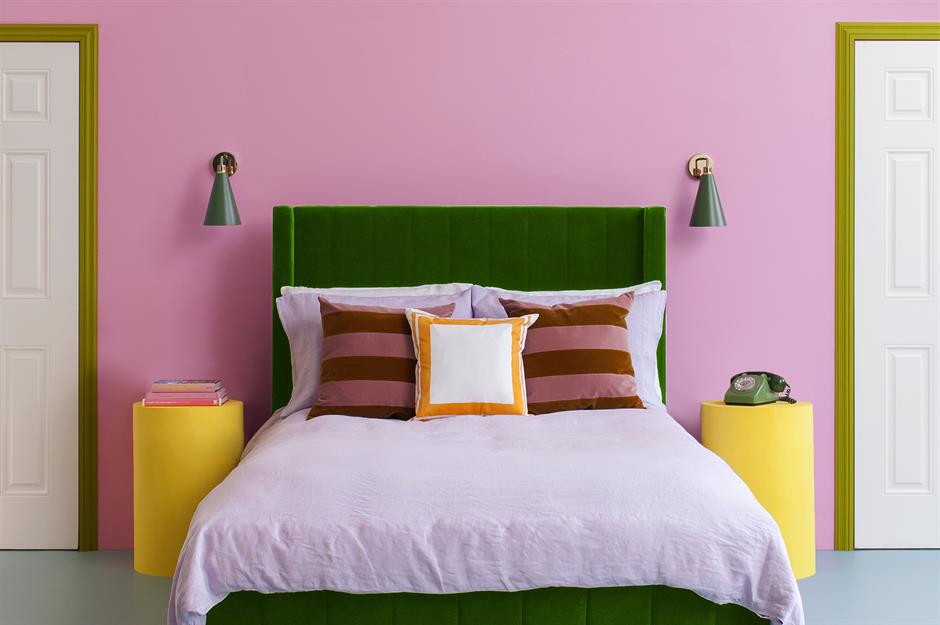
While painting residential woodwork a discreet shade of white was the norm for a long time, the switch to coloured gloss paint delivered a much-needed touch of drama.
Perhaps a bolder tone was needed to highlight all the psychedelic wallpaper. Now toned joinery has come about once again and we adore the update.
These feel-good paints are from YesColours.
Plaid decor
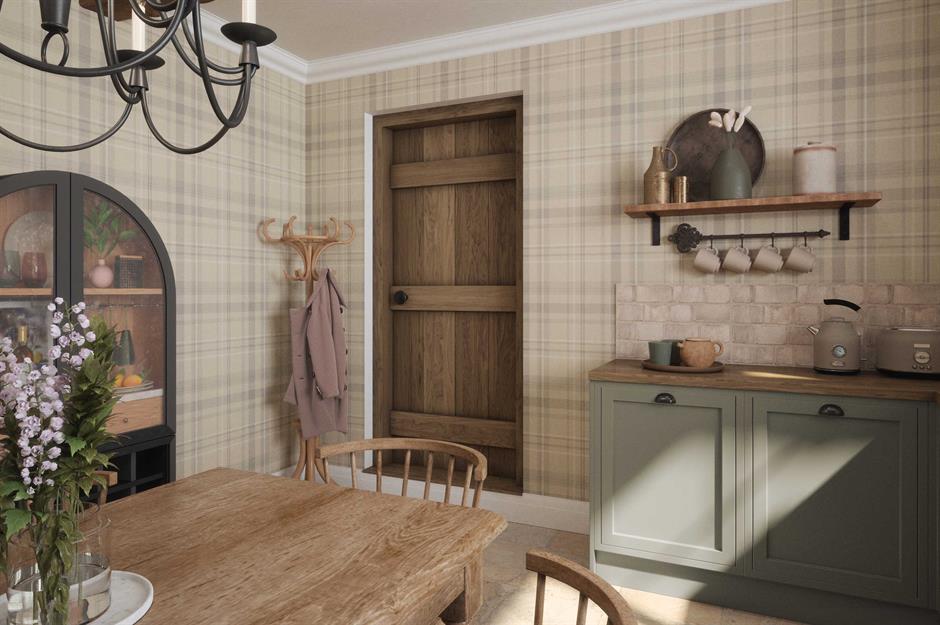
Versatile, practical and comforting, plaid-covered seats and sofas were a staple upholstery option in many homes from the 50s, up until the 90s. Colourways matched mahogany wood furniture, while crochet covers and cushions added to the texture overload.
If you have a taste for warm neutrals and cosy vibes, plaid is well worth remembering – even on your walls!
Find this tartan wallpaper at Lucie Annabel.
Mosaic-inspired patterns
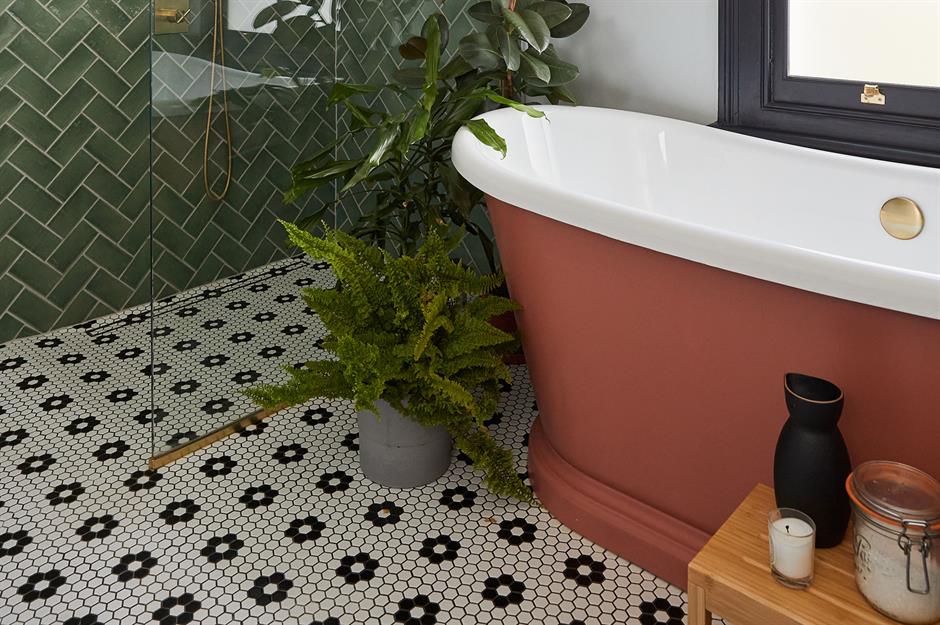
Middle Eastern geometric patterns have been favourites for centuries, with designs including simple stars, flowers and lozenges in earthy tones always proving enchanting to the eye.
Feature splashbacks and statement floors make ideal surfaces to showcase this classic exquisite craftsmanship.
These luxury tiles are from Ca' Pietra.
Classic cookery aids
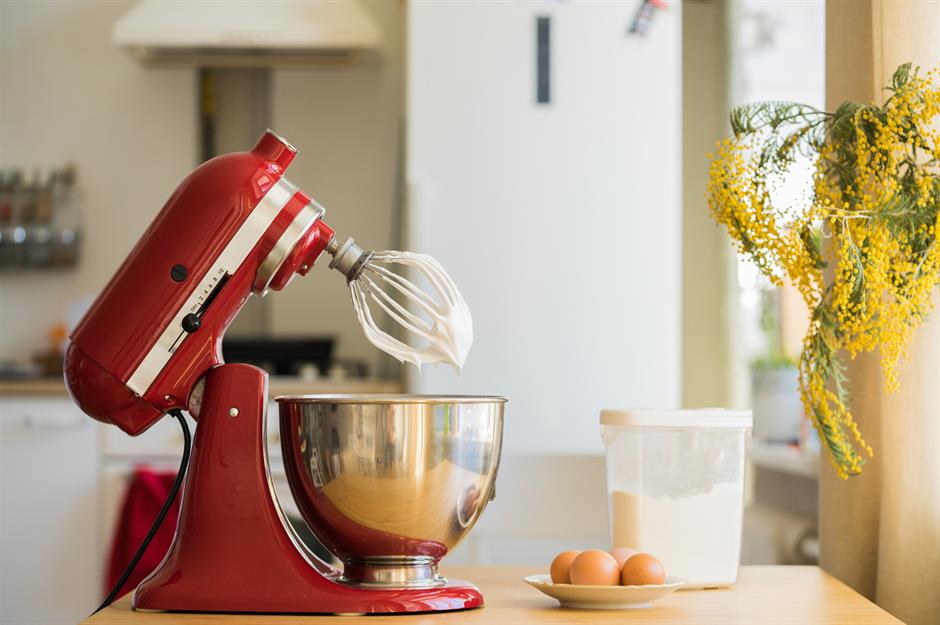
While the reality of a 50s housewife's lifestyle in a time before feminism and gender equality is hardly anything to celebrate, a number of iconic kitchen tools and home appliances of that era have stood the test of time and should make a welcome comeback.
The lozenge-shaped styling of a classic Smeg fridge will always lend a chic accent to a kitchen, while classic hand-mixers continue to whip up batches of bakes, as they did decades before.
Spinning colanders
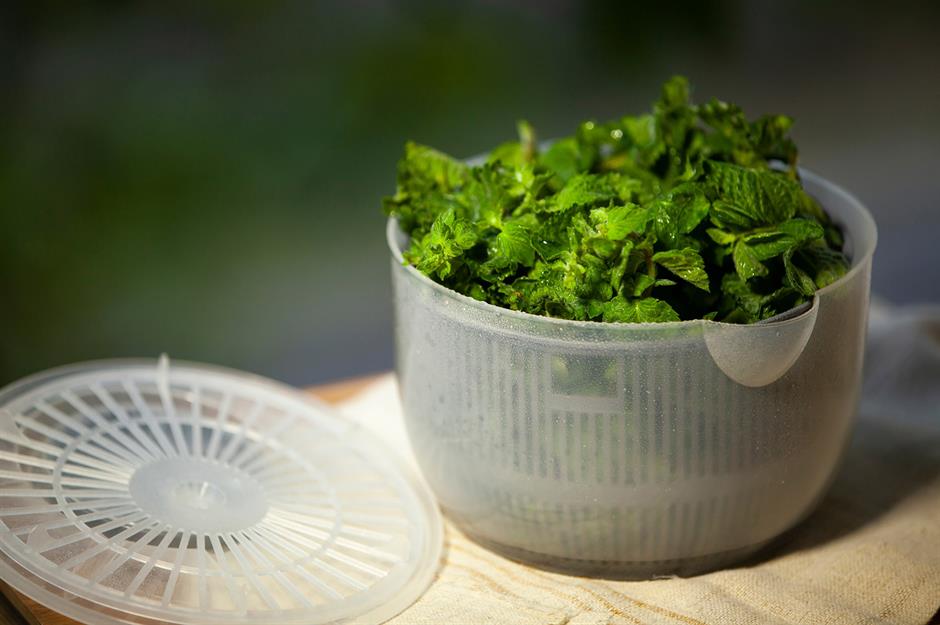
Salad spinners cleverly whizzed water out of wet lettuce and washed vegetables with vigorous whirls throughout the 70s and 80s.
But today it's unusual to see a spinning colander in a contemporary kitchen, and we want to know why, those devices delivered the crispest, driest sliced carrots shredded little gems we've ever tasted.
Plates on walls
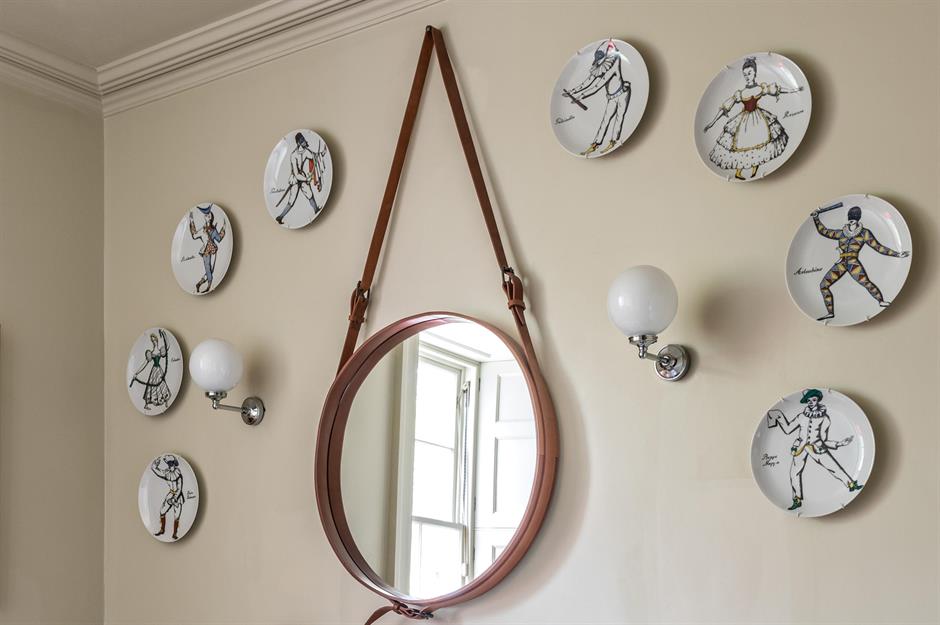
From dishes painted with images of fruit that we picked up during holidays to the Med to those Brambly Hedge plates we so wanted in our bedroom, during the 70s and 80s wall plates were thought of as smashing objects to raise the standard of your decor.
Want to give the retro look a go? Why not create a humid-friendly feature in the bathroom by mounting ceramic plates above the bath? Or you could break up a gallery wall with a few contemporary wall plates from the likes of Fornasetti or Anthropologie.
Decorating with stripes
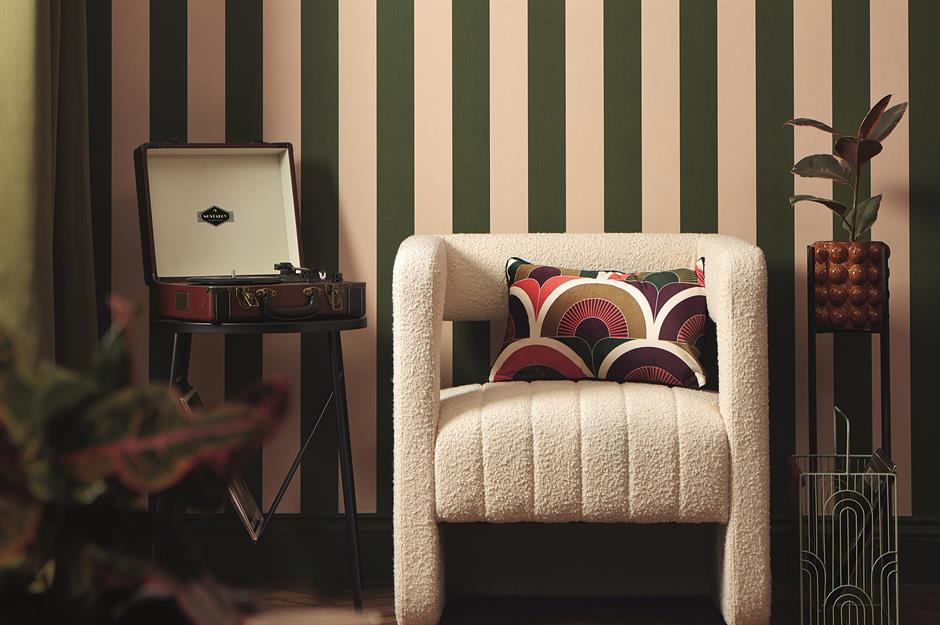
At one point, 'bigger and bolder' was better when it came to using stripes in home décor, and whether they were horizontal or diagonal, wallpaper showed strong lines off well.
We love to see a range of stripes – everything from bold, fresh coastal stripes to a more subtle pin-stripe.
This stripey wallpaper can be found at Lust Home.
Electric blankets
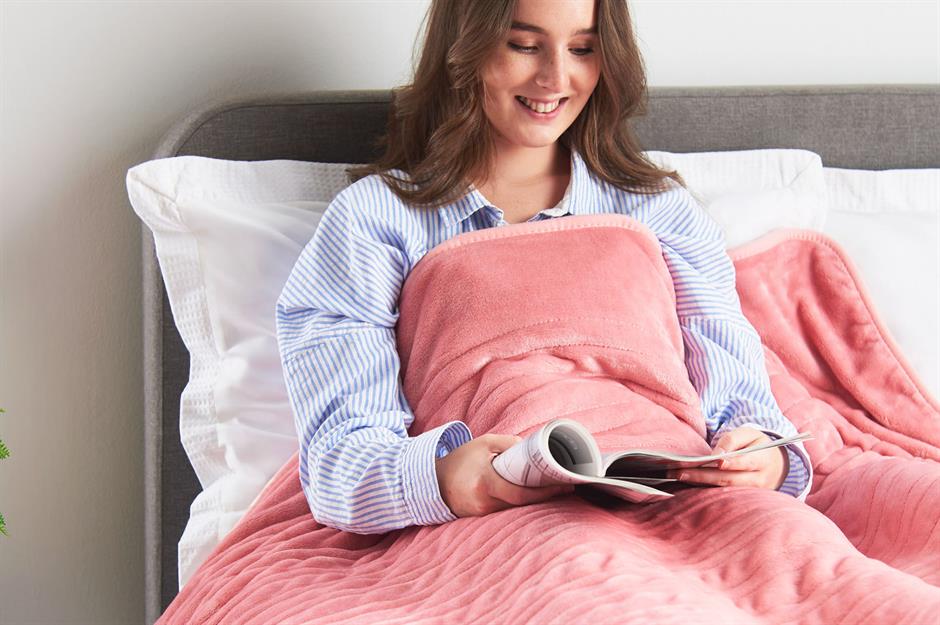
In the 1950s, hot water bottles were banished in favour of high-tech electric blankets, users turning up the dial on their heated duvets as the night grew colder.
As we look for ways to keep homes warm in winter and heating hacks to cut down on energy bills, research by Silent Night has found that electric bedding is back. Back in 2022, their sales increased by 400% in just one week. These days, you can buy the traditional under-sheet style, as well as snuggly heated throws like this one from VonHaus.
Silent servants
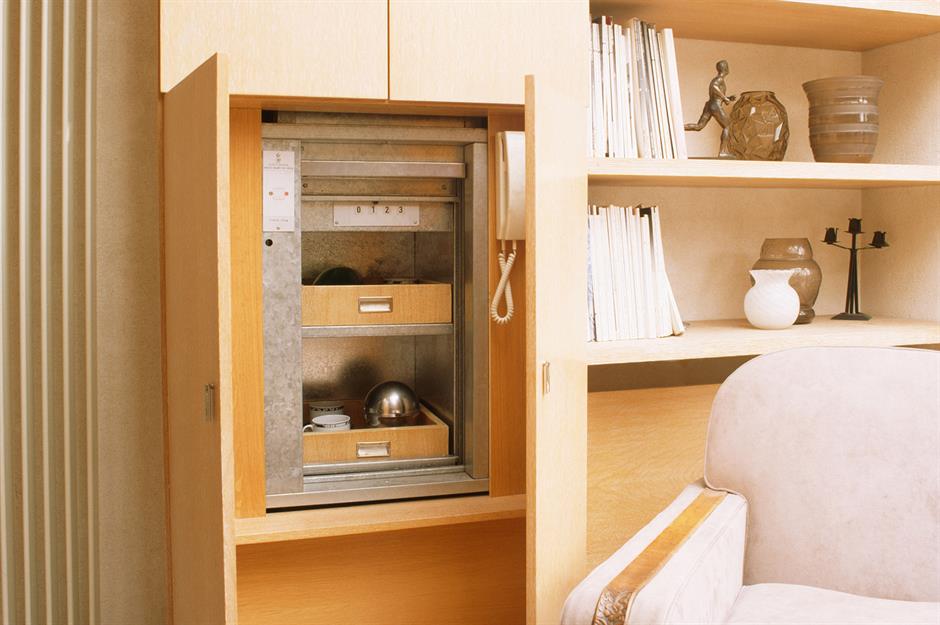
The popular Netflix thriller The Watcher uses 'silent servants' (or dumbwaiters, as they used to be known) as a key element of its plot. The small freight elevators were intended to carry food in large houses from kitchen basements to dining rooms and bedrooms on other floors.
We think owners of townhouses and apartments would see the benefits of these features today, if only to ferry grocery shopping up to the kitchen or run a laundry batch up to bedrooms.
Toile Du Jouy prints
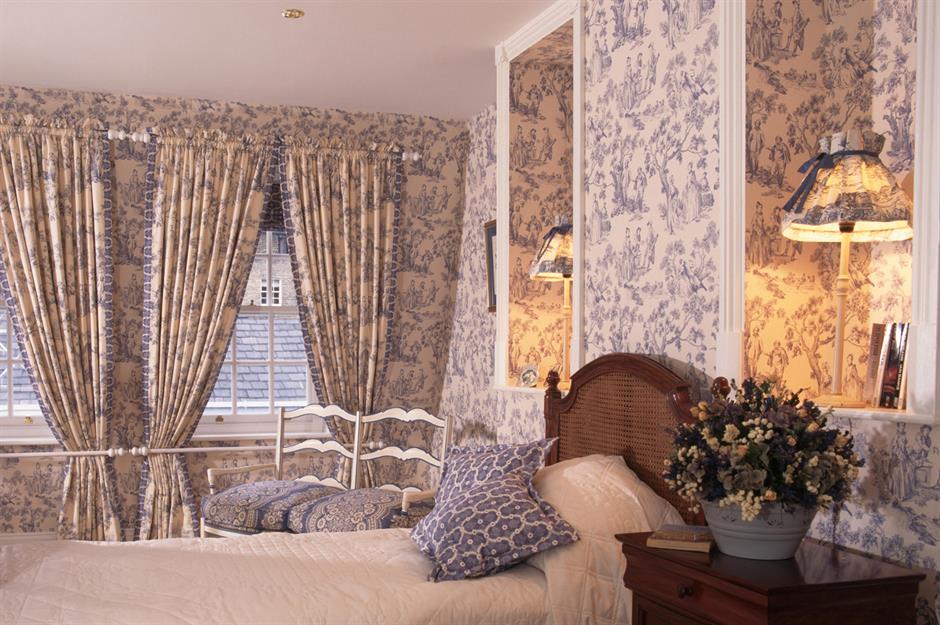
'Toile de Jouy' prints date back to 18th-century France, but we're most familiar with the pictorial pattern from country-style bedrooms and vintage catalogues.
Today, established interior design companies and fabric houses have elegantly brought the pattern up-to-date with contemporary illustrations and fresh colours, so bring on some more of the pretty canvas.
Step-up baths

The compact, shaped tub that fitted snuggly into a corner was once a space-saver for small bathrooms. Tiled surrounding steps raised the luxury bar and created a sense of flow and depth in the bathrooms.
We think they will always look hip. In fact, as sunken bathtubs have so many possibilities, they are gaining popularity with interior designers once again - as you can see from this slick, spa-like design.
Iconic wall art
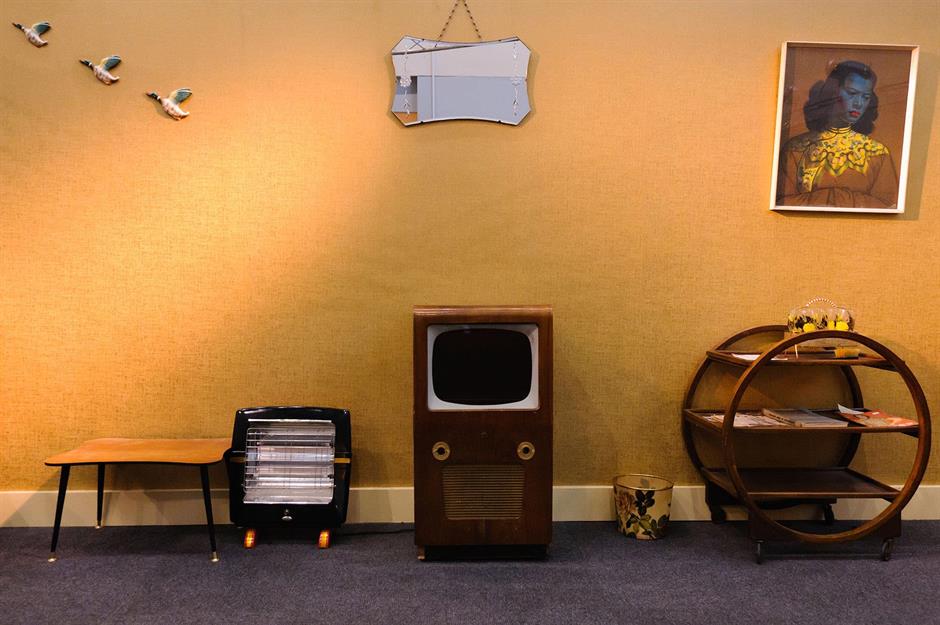
All baby boomers should recognise Tretchikoff's most famous oil painting, the female sitter's blue-green face and bright red lips gazed down into so many living rooms half a century or so ago. 'The Chinese Girl', often remembered as 'The Green Lady', remains the best-selling art print of all time.
Sixty years ago it might have been mounted in decorative, gold effect frames, but a contemporary surround will bring the striking piece right up to date.
Chrome furnishings
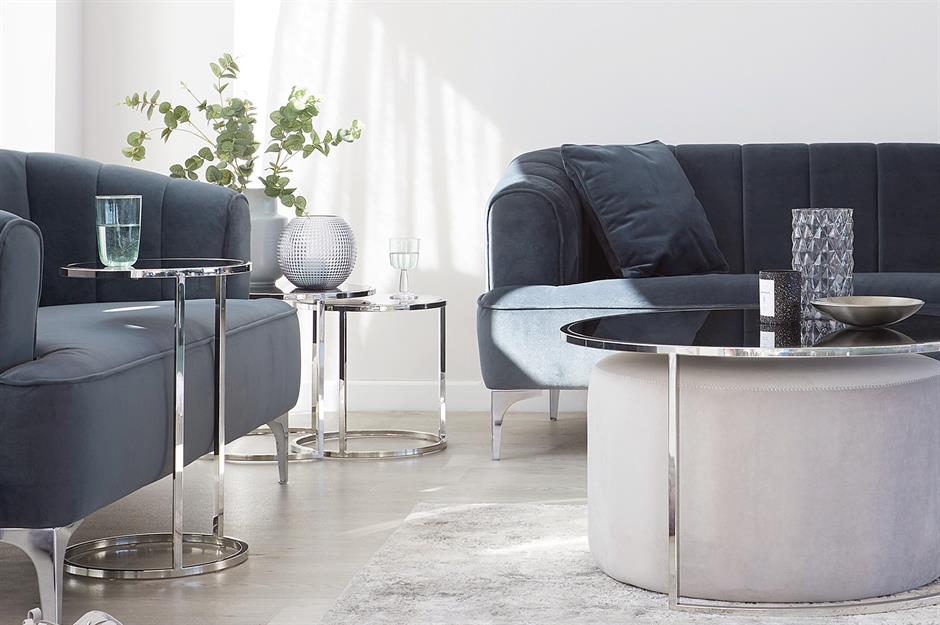
Since the 1920s, chrome has been big news in interior design, becoming iconic in the 1950s when chrome-legged tables with Formica tops filled every single house and diner in Europe and North America. Yet as the years passed, chrome's popularity faded.
Perfect for creating a stylish finish in any home, we'd welcome the return of chrome fixtures and furnishings, the perfect alternative to over-done brass, copper and rose gold.
These pieces are from Danetti.
Bed curtains and canopies
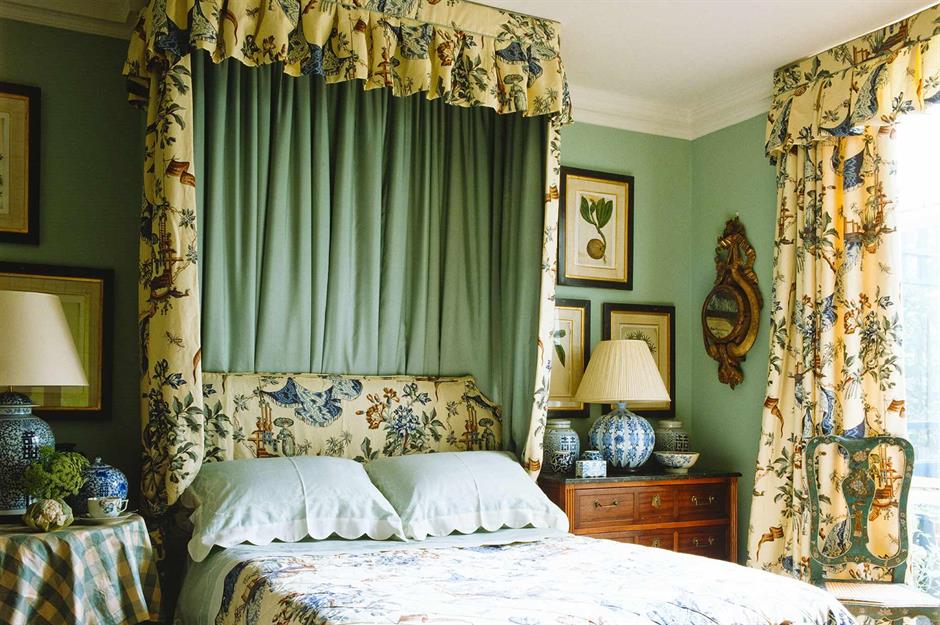
While the romance of a four-poster bed has never really gone out of fashion, you’re more likely to find a sheer swathing of voile curtains or even a macramé weaving suspended from its frame than a hefty drape. In an age where good quality sleep is scarce, we think it’s time to bring back a dark and cosy sleeping space that blocks out the modern world while you slumber.
Mid-century stonework
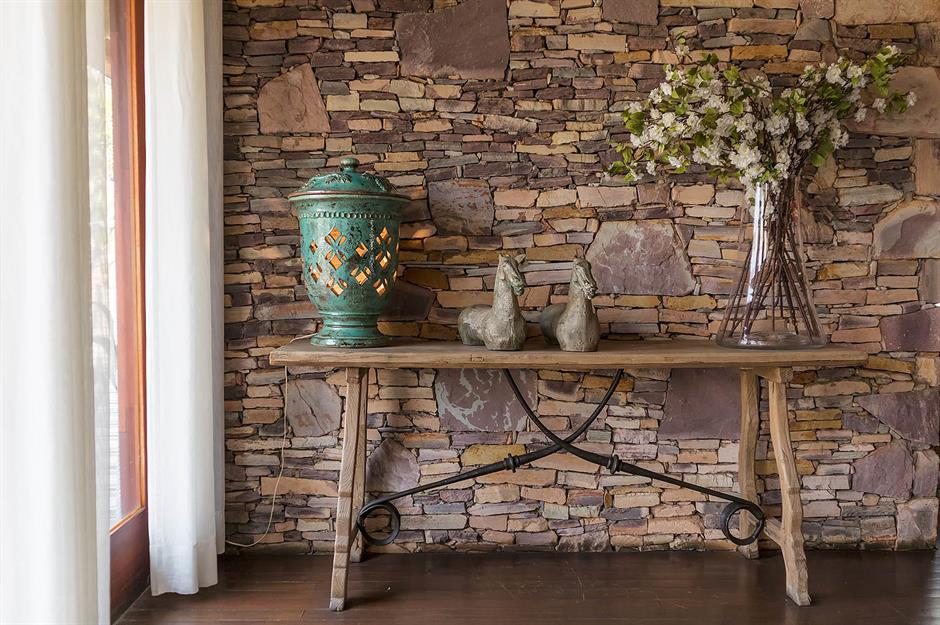
We don't know about you, but we love everything mid-century modern. Defined by exposed timber, expansive glass and unusual roof lines, this design movement was big between 1945 and the late 70s.
Many of its key architects loved a bit of crazy paving-style stonework and we think this cool, textural feature could make a real impact in 21st-century interiors. The ultimate way to create a unique focal point and showcase the beauty of raw materials, is mid-century stonework, this look is begging to be reinvented.
Teasmade
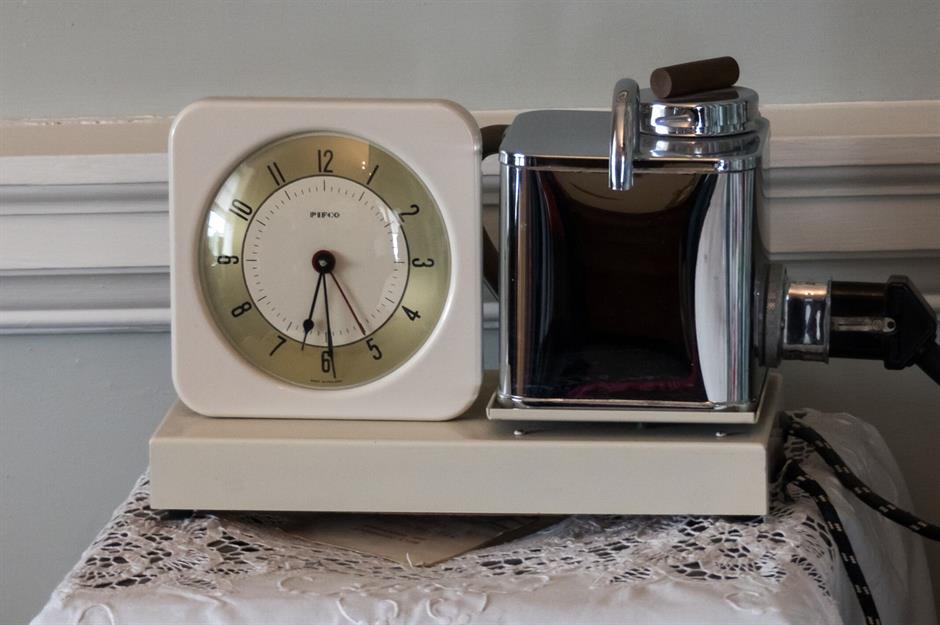
No matter how you take your tea, the Teasmade would not disappoint. Invented in 1891, this clever piece of technology peaked in popularity during the 60s and 70s. The gizmo was designed to sit on the bedside table and featured an alarm clock so that the perfect brew would be waiting for you when you woke up in the morning.
When it comes to retro homeware, we really can't understand why such a useful item fell into obscurity and love the idea of starting our Sundays with a freshly brewed cuppa in bed.
Dark wooden cladding
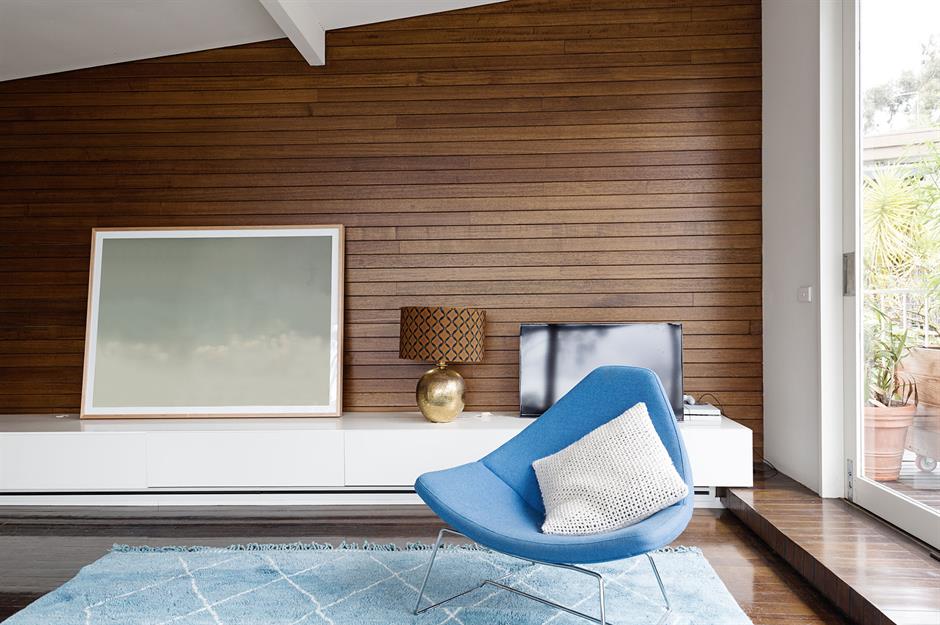
Ultra-stylish timber panelling could once be found in many a home, from the 40s right up until the 1970s, growing in popularity thanks to the mid-century modern movement.
Yet as pastels, chintz and shabby chic styling became the in-thing in the 1980s, cladding all but vanished. Cool, stylish and the perfect way to create a feature in any space, dark wooden cladding would be a fantastic addition to any contemporary interior.
Transom windows
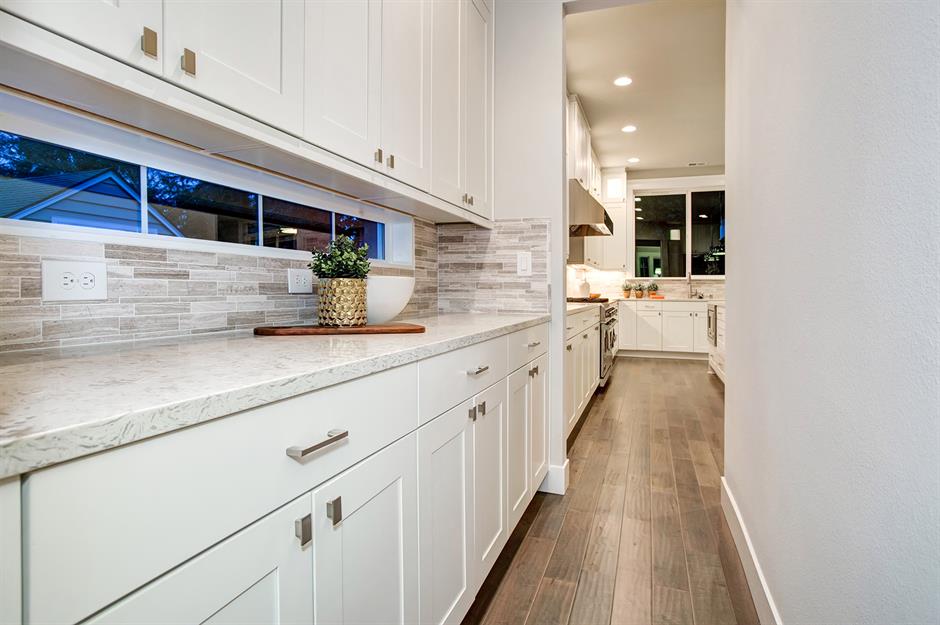
A long time before sliding doors, bi-folds and skylights, transom windows were the ultimate way to allow extra natural light to spill indoors, although usually they don't open. So named because they could be found in a horizontal strip above a window or door's transom, these glazing elements were also often located above front doors and sometimes featured pretty stained glass detailing.
Modern design trends saw transoms fall into obscurity, but we'd like to see this classic window style find its way back into homes – to let light into a galley kitchen, for example.
Window seats
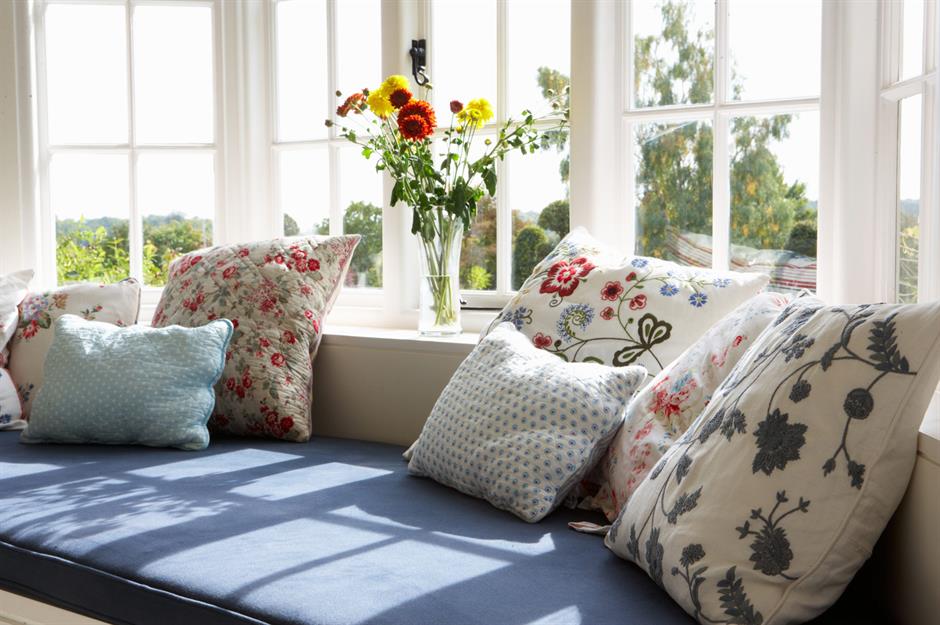
Since the 18th century, homeowners have been making the most of the space below their windows. Providing the perfect spot to curl up with a book, the window seat has transformed a lot since the Georgian era.
Going from simple, backless metal chairs to wooden built-ins finished with beautiful upholstery, window seats are not only attractive but perfect for providing hidden storage and we're on a mission to bring them back into favour!
Writing desks
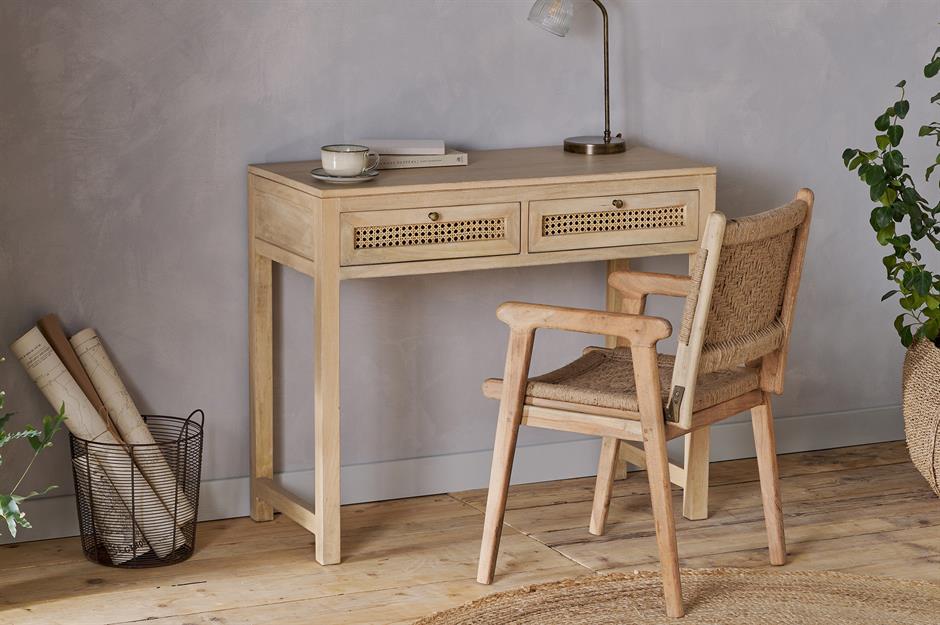
Also dating back to the 18th century, writing desks and bureaus were once essential homeware items, but as slimline laptops and paper-free working became more popular, such furnishings were no longer necessary.
Now, as journaling, adult colouring and working from home are all on the rise, a desk of one's own seems utterly enticing. With plenty of working space and ample storage drawers, we know plenty of people who could benefit from one of these.
This stylish desk is from Kayu Home.
Airing cupboards
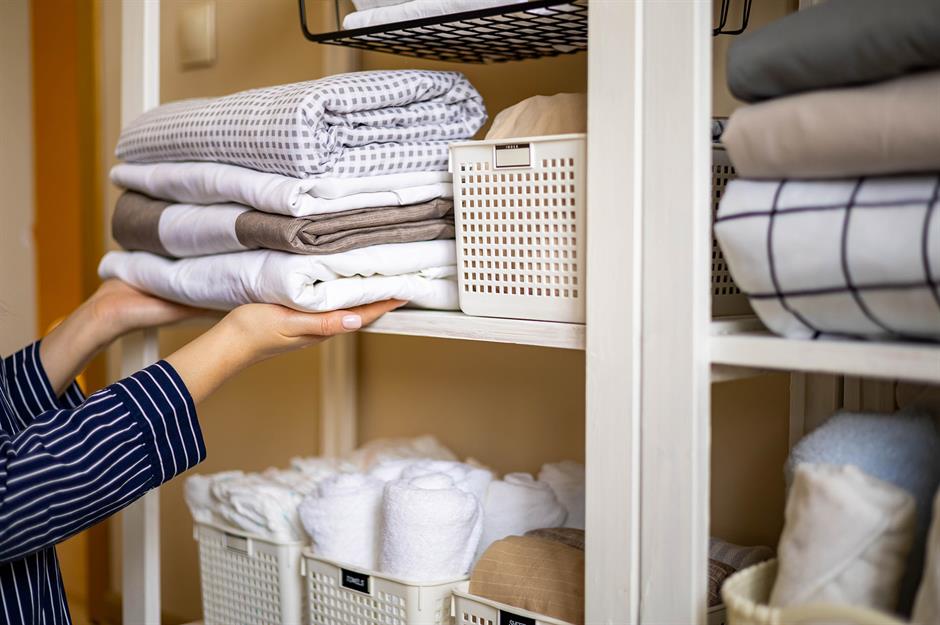
Long before smart home tech and combi boilers, many homes featured a giant hot water tank, which was stored inside an airing cupboard. The ideal space for drying clothes and storing towels, airing cupboards were warm and toasty all year round.
Now in decline, there's no denying their usefulness. The perfect addition to modern-day interiors, airing cupboards allow you to dry your laundry and hide away all of your bathroom essentials, what could be smarter than that?
Clothes drying racks
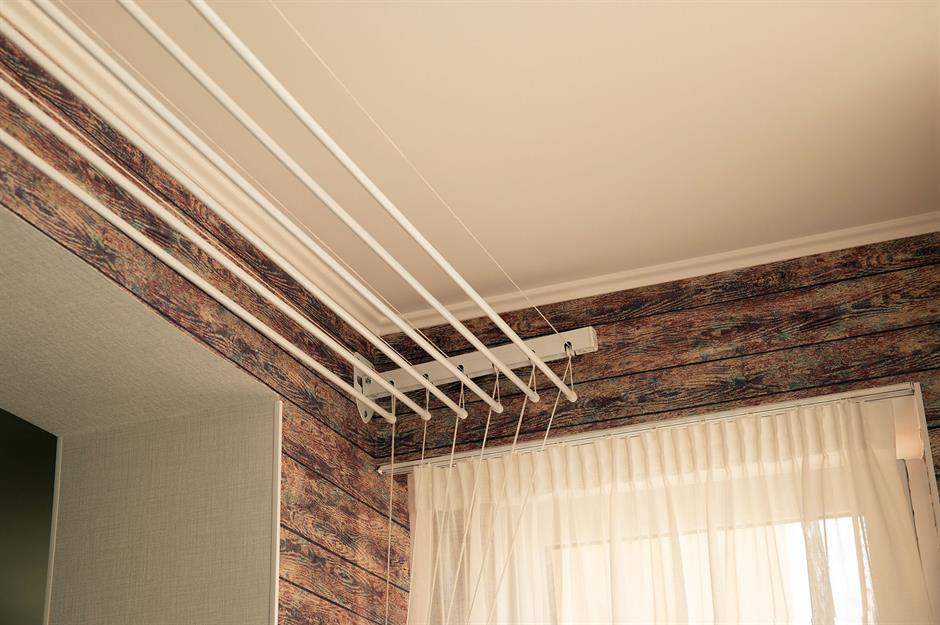
Drying racks, also known as overhead airers and Sheila Maids, were once extremely useful items that could be found hanging from the ceiling of almost every home on the planet.
Popular from the late 18th century onward, these practical contraptions fell out of favour after the Second World War, when technological advancements saw a boom in the tumble dryer. Yet as homeowners turn to eco-friendly alternatives or are forced to buy much smaller homes, this simple yet useful device seems too good to ignore.
Stable doors
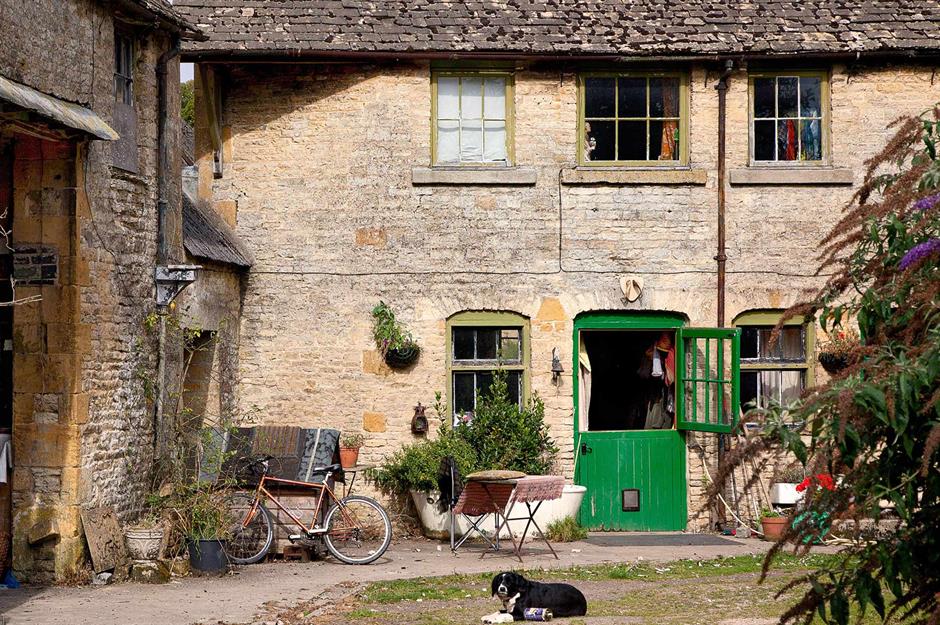
Back in the day, traditional farmhouses and cottages often featured stable doors. Created in two parts, the top part of the door could be opened to allow fresh air and light to travel inside, while the lower part could be kept closed to keep children and pets secure inside.
Stable doors were soon overtaken by composite and PVC creations, yet these stylish and fun doors remain as practical as ever and would allow for safety without compromising on air circulation or natural light.
Hostess trolleys
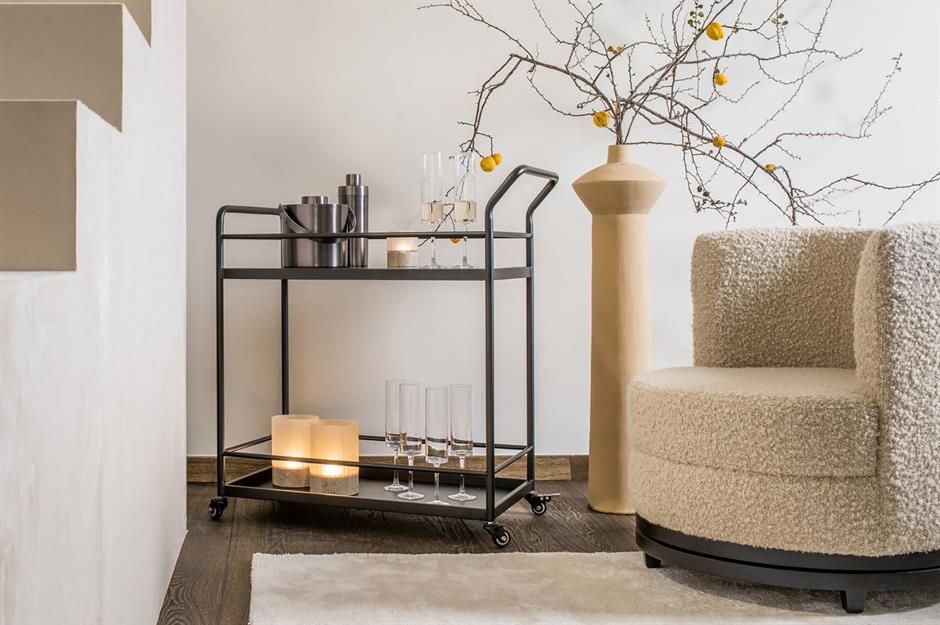
Hostess trolleys were a must-have item for every household between the 1920s and 80s since they provided the perfect way of delivering drinks, afternoon tea and finger food to visiting guests.
Sadly, as modern interior tastes changed, such kitsch items all but disappeared from our properties. Yet, what could be better for a Gatsby-inspired cocktail soirée, party nibbles, or kids' birthdays? For that reason, we'd love modern hostess trolleys like this one from Sweetpea & Willow to wheel their way back into 21st-century life.
TV cabinets
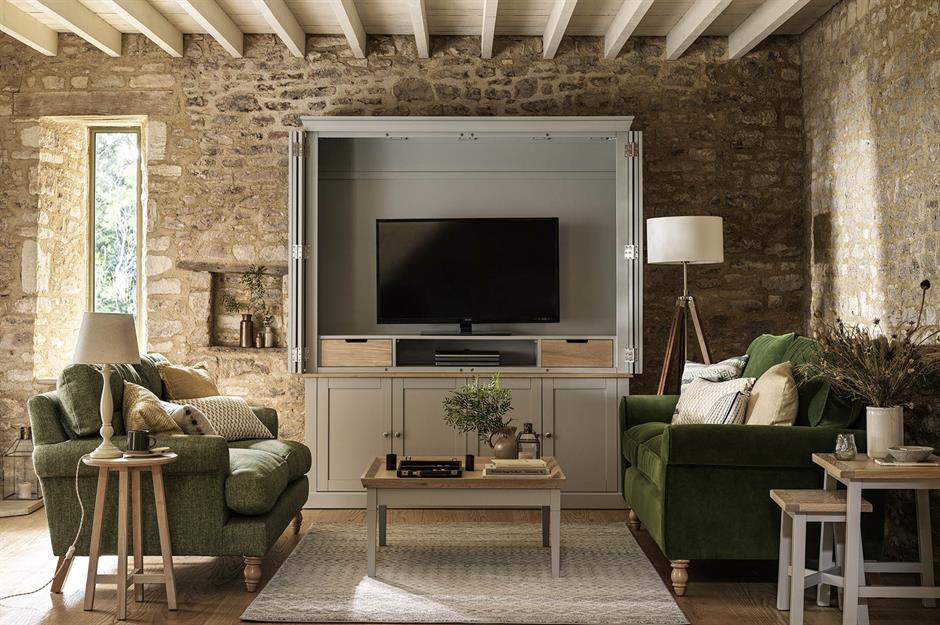
Since the 1960s, almost every living room around the world has featured a television. Clunky and unsightly, many homeowners opted to hide their TV set away in a stylish wooden cabinet, complete with storage and doors. Yet as modern flat screens and wall-mounted LCDs grew in popularity, many did away with such furnishings.
We're firm believers that TV cabinets would be a fantastic addition to contemporary homes, offering a place to store your television set without having to display it.
This cabinet is from The Cotswold Company.
Biscuit tins
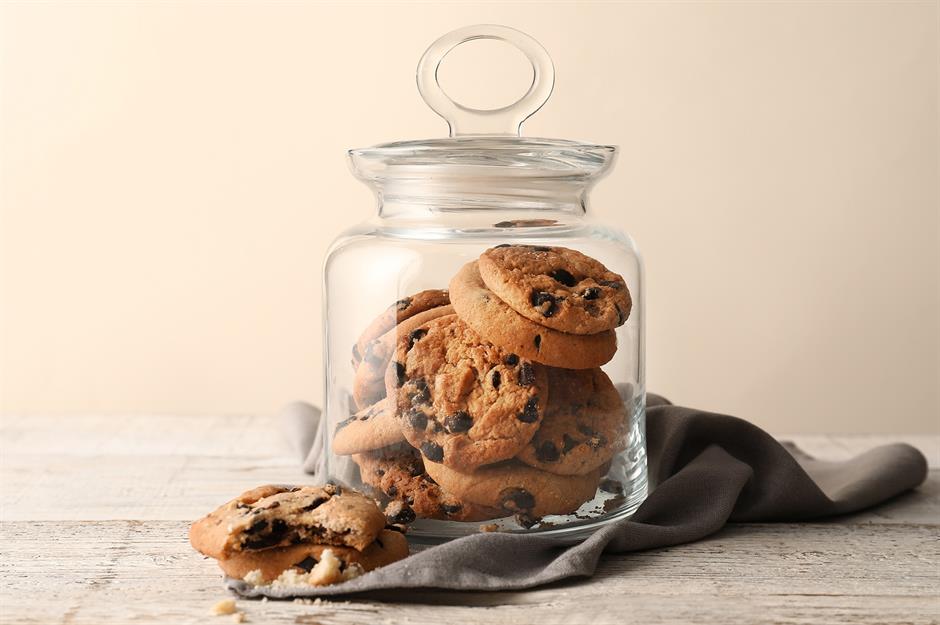
The humble biscuit tin or cookie jar was once used to keep treats fresh, before preservatives and plastic packaging did the job for us.
Yet as people wise up to the joys of home baking and avoid unnatural ingredients, it seems sensible for everyone to invest, once again, in one of these perfectly practical storage vessels. Plus, you'll always know exactly where to look when you fancy a sugar fix! Sounds like a win-win to us...
Radio alarm clocks
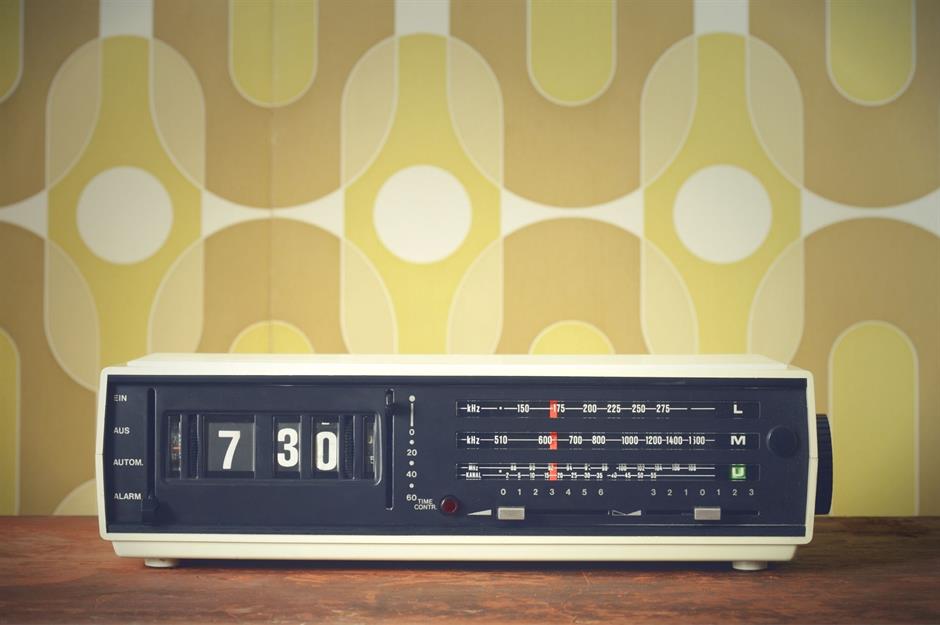
Long before Alexa and the iPhone, people had to make do with radio alarm clocks, which woke them to the sound of their favourite radio station. As modern technology evolved, these useful items all but disappeared.
Perfect for a modern-day digital detox in the bedroom, radio alarm clocks offer everything you could need to help you wake up on time without having to rely on your mobile phone.
Lazy Susans
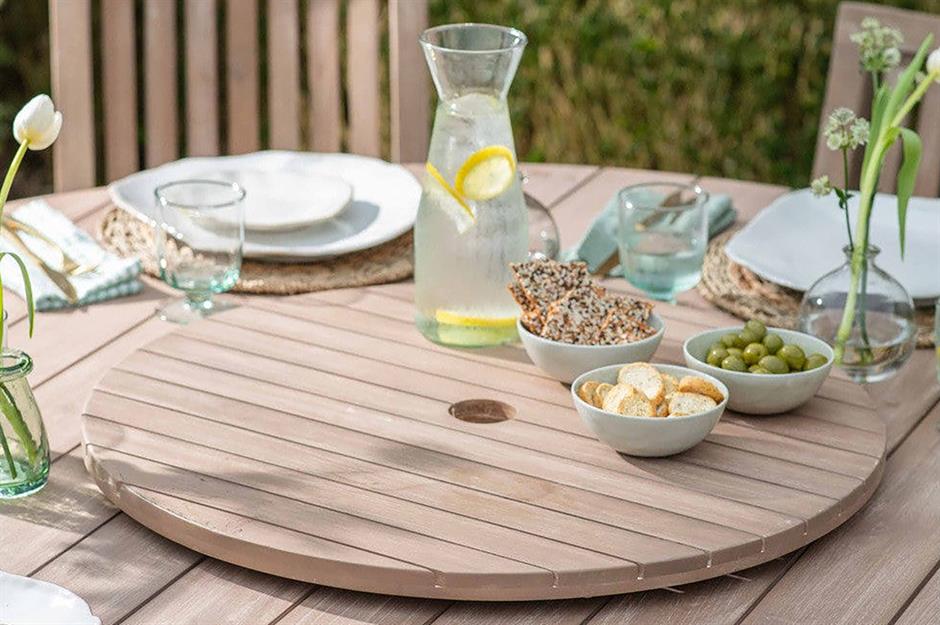
The Lazy Susan was once the height of kitchenware sophistication and came in a plethora of colours, shapes and styles. Whether for countertops, cupboards or the dining table, this handy vessel was perfect for serving up dishes and sauces. The gadget was invented by Thomas Jefferson back in the 18th century after his daughter complained about always being served last.
As tastes changed, the Lazy Susan became a piece of nostalgia, but we know how useful many modern families would find them, especially for Sunday lunch or summer barbecues.
This Lazy Susan is from Yester Home.
Magazine racks
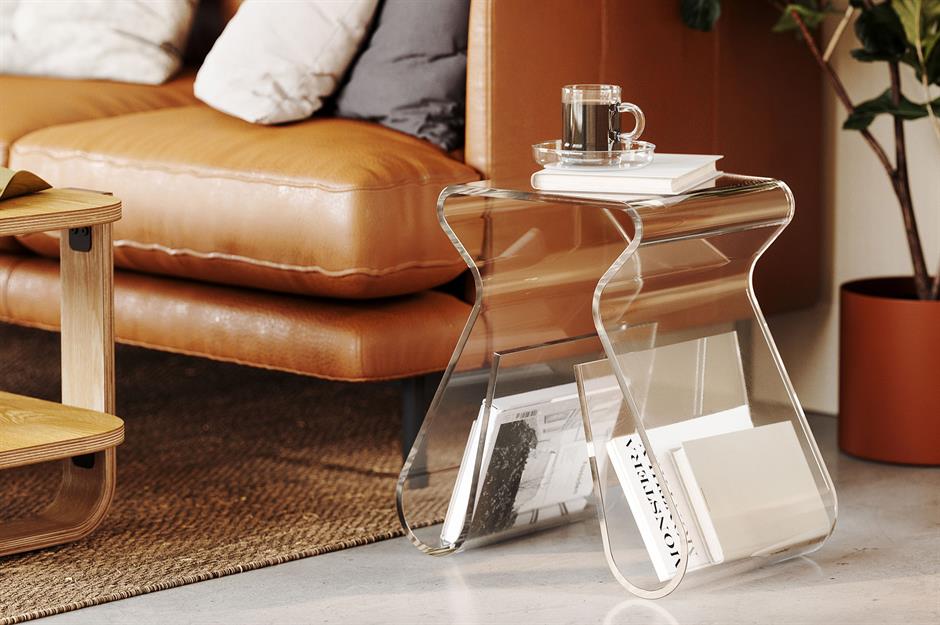
Chances are you’ll remember these from your grandparents' house, positioned at the end of the couch and stuffed with that week’s TV guide and the local paper. While the move to online news and listings may have found these handy storage solutions falling out of fashion, we think it’s time for a comeback.
Where better to keep those special monthly mags than in a rattan rack or an ultra-modern one like this one from A Place for Everything?
Clotheslines
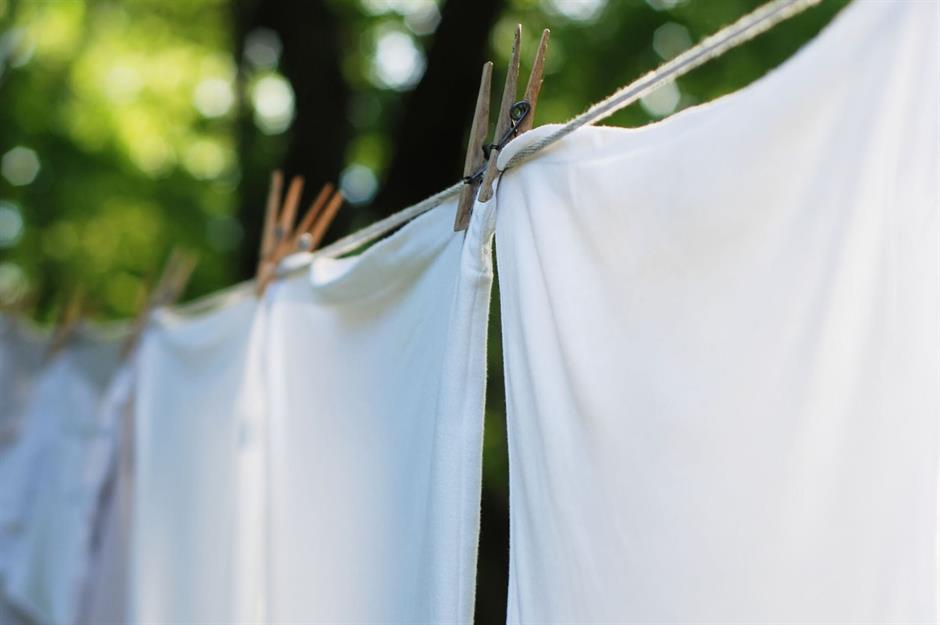
Before the introduction of the tumble dryer, which found its way into over 50% of UK homes in the 1990s, many instead hung their laundry on clotheslines in their back gardens. Yet such exterior lines soon became less popular when the convenience of modern technology became too good to resist.
However, as we all start to make decisions that are better for the environment, it seems wrong to ignore such simple household items that don't cost the earth.
Doorstep shoe scrapers
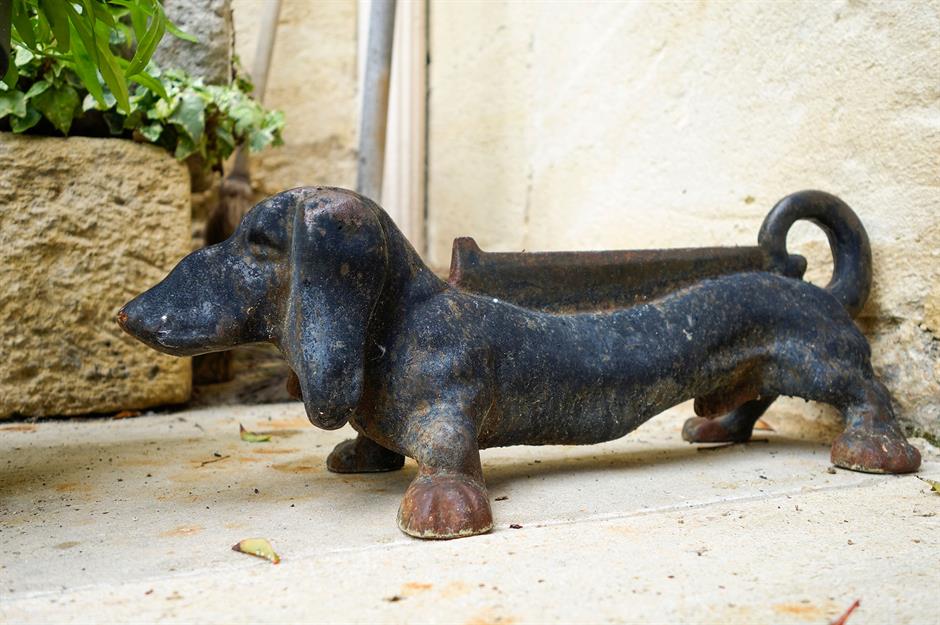
Throughout the 18th and 19th centuries, boot scrapers could be found on doorsteps across Europe and America. The cast iron contraption was invented at the same time as the footpath and allowed wealthy homeowners to clean their shoes before going indoors. It's thought that concerns over public safety led to their demise, but we can think of few items more useful than this.
We imagine they'd be very well-received in modern households, especially those located in the countryside. Who wouldn't want to be greeted by this little chap as they arrived home?
Paper towel holders
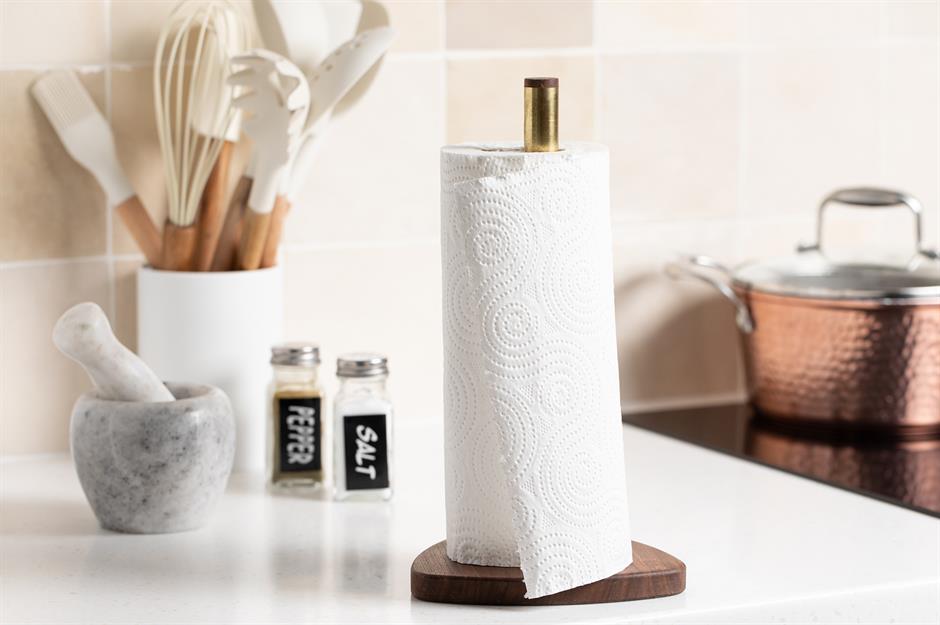
Paper towel or kitchen roll holders once decorated kitchen walls and worktops across the planet. Yet as kitchens became more streamlined, many homeowners opted instead for minimalist accessories and clean worktops, and paper towel holders faded into obscurity.
But there's still a need for such an item, and we can definitely see their value in contemporary life, especially if you crave some kitchen nostalgia.
Dish-drying cabinets
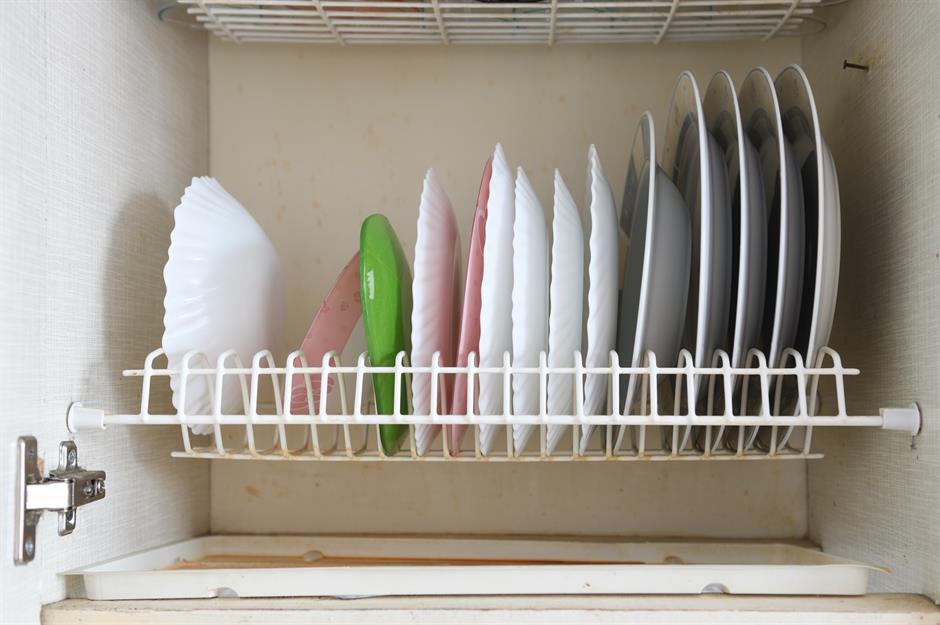
Once found suspended in cupboards above the sink, dish-drying cabinets allowed unsightly wet plates and pans to be hidden away while they air-dried. Yet when people began buying dishwashers, which found their way into homes in the late 1920s when permanent plumbing was introduced, the need for such a device slowly decreased.
In a bid to save energy, reduce bills and live more sustainably, we know there's a place for dish-drying cabinets in modern kitchens.
Wicker shopping baskets

Before convenience shopping and local supermarkets caused us all to turn to plastic bags and grab-and-go, many homeowners had a wicker shopping basket in their home, there for when they needed to pop to the market or the allotment.
So, as we all begin to reduce, reuse and recycle more, to have as little impact on the environment as possible, there's never been a better time to embrace this once-loved household essential.
Terrific teapots

Invented in China during the Yuan dynasty, there was a time when most homes had a teapot. Perfect for serving guests a fine cuppa, teapots enabled hosts to top up cups without having to leave the room, or reboil the kettle!
Then, in the 1960s, tea bags came out and many no longer felt the need for a pot, but we think that many could benefit from one today, as they're perfect for saving energy! They might seem old-fashioned, but teapots still serve a very real purpose and these days come in many modern designs.
These modern ceramics can be found at Handmade in Britain.
Cast iron trivets
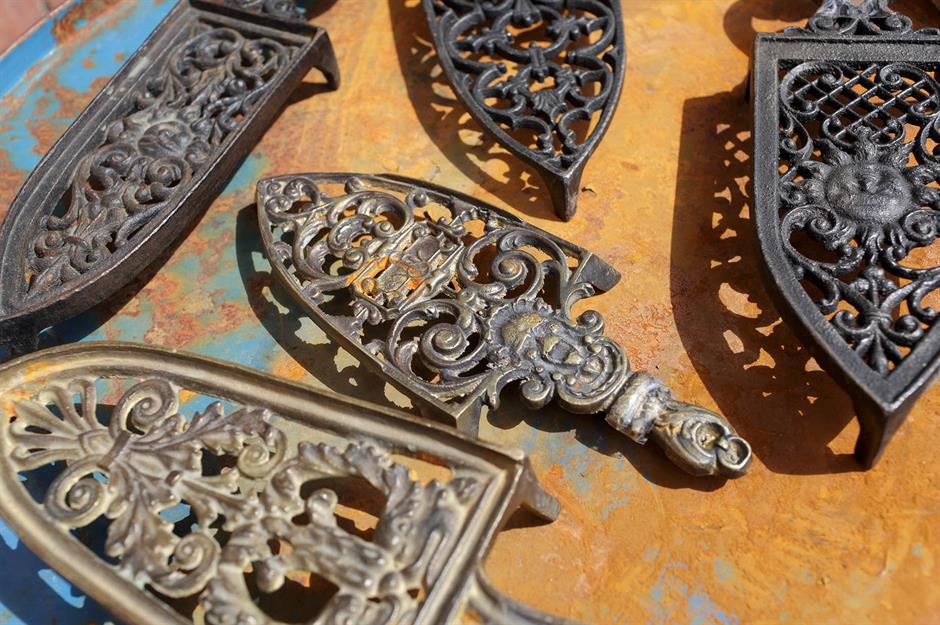
Before the invention of heat-resistant kitchen worktops, we had to use a cast iron trivet to protect tables and benches from damage. Perfect for placing a hot pot or pan on while serving up, these handy little kitchen gadgets are now no longer popular. Yet, their usefulness hasn't changed.
Imagine everything you could do with one of these in your kitchen. Perfect for casserole dishes and frying pans, a cast iron trivet could well spare your elegant countertops and tables from irreversible marks.
TV tray tables

As more and more homeowners bought television sets, families around the world began eating their meals in front of their favourite shows. An essential part of this evening ritual was the TV tray table, which made family dinners a much more straightforward affair!
Popular until the 90s, this handy little household item would be fantastic for Millennials. Just think how much easier Netflix and chill would be, with a couch-side table to hand!
Find this one from B&Q.
Bathtub caddies
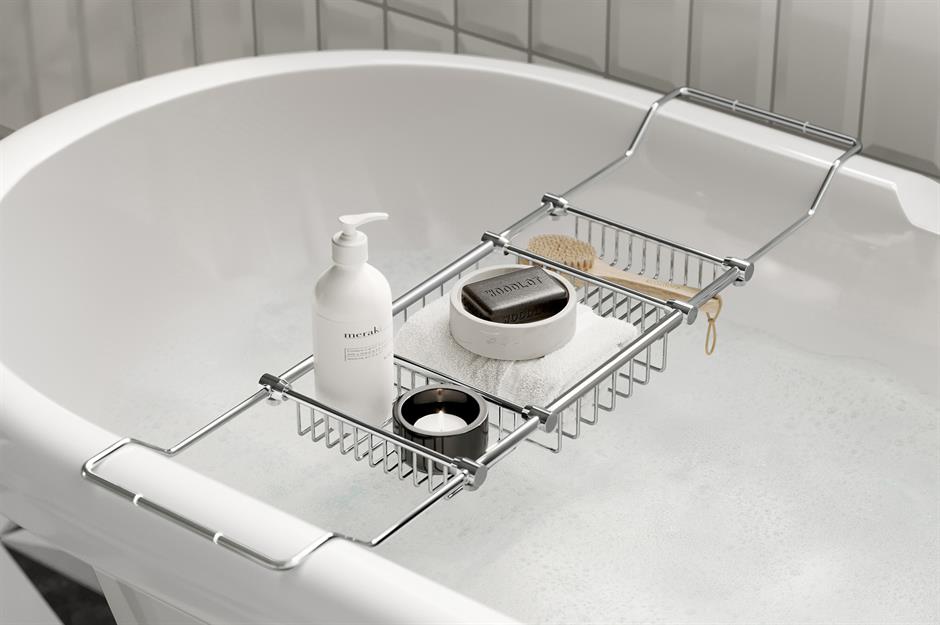
Back in the day, particularly during the 80s and 90s, many bathrooms boasted a caddy that straddled the top of the bathtub. The perfect spot for storing sponges, soaps and flannels, modern-day tastes saw such devices thrown out in favour of bathroom shelving units and free-standing bottles.
But imagine the joys of having a caddy to hand, a place to rest your book, candle or iPad as you submerge yourself beneath the bubbles, like you're at your very own home spa!
This bath caddy is from Bathroom Mountain.
Laundry chutes
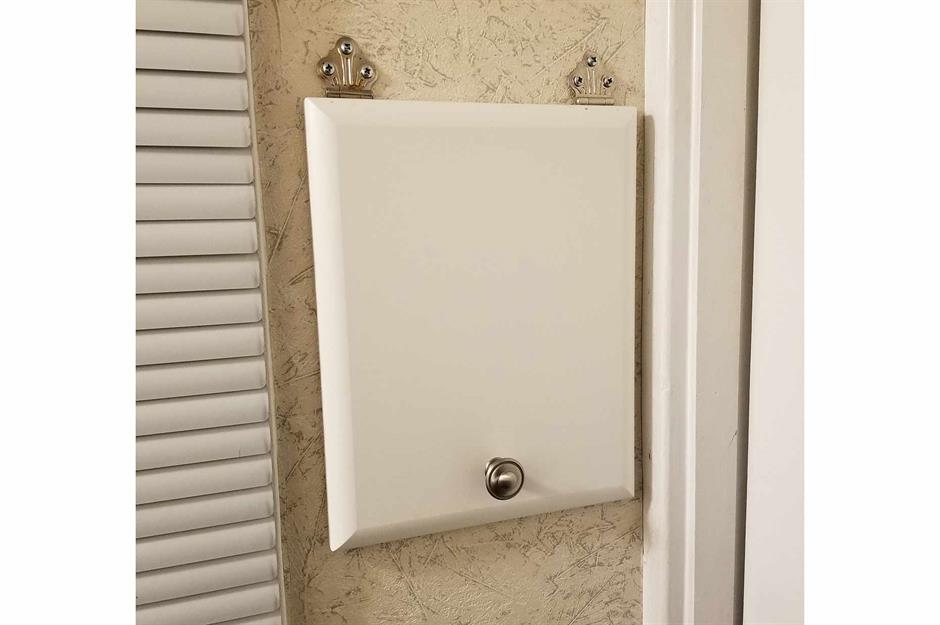
Inspired by industrial turn-of-the-century chutes, the humble laundry chute began cropping up in people's homes in the 1930s, especially across North America. An indicator of family wealth, chutes were hidden inside wall cavities and connected the upper floor with the basement, where laundry facilities were usually kept.
Allowing homeowners to – quite literally – lighten their load and avoid carrying dirty clothes down numerous flights of stairs, there's no obvious reason why every single home doesn't have one of these extremely useful devices.
Modular sofas
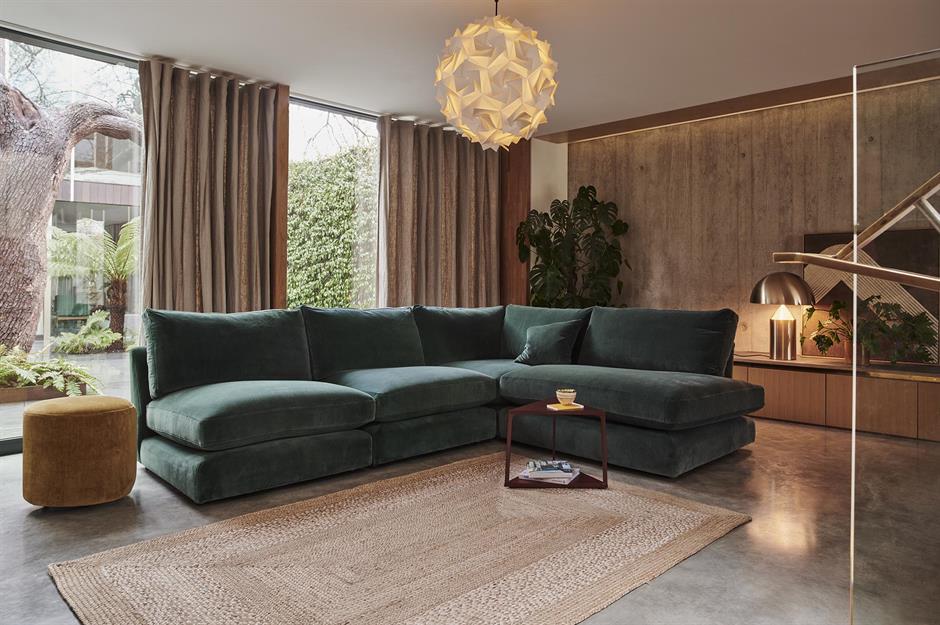
Another practical furnishing of yesteryear is the modular sofa. Also known as sectional sofas, these simple seats were created from a number of individual pieces, designed to be used in a variety of configurations to suit any living room layout.
Popular in vintage living rooms throughout the 50s, 60s and 70s, they are said to have been invented by American designer Harvey Probber in 1944. Perfect for a broken-plan layout, the flexibility of the modular sofa seems too good to ignore.
You can find this one at Arlo & Jacob.
Serving hatches
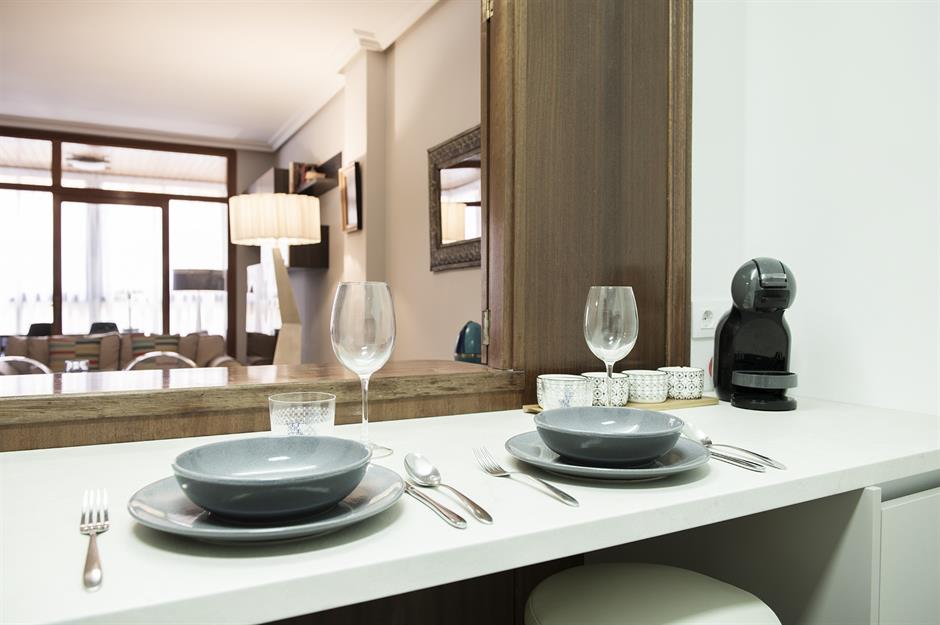
Back in the day, many homes featured a small opening that connected the living room or dining room with the kitchen. Making dinnertime quick and straightforward, meals could be passed through the serving hatch and straight to the table. It also had the benefit of allowing the chef of the household to chat with their family or guests as they cooked.
Popularised in the 1970s, the humble serving hatch remained in our homes until the 90s, when people started plastering over them to create a more streamlined interior aesthetic. Cute and fun, this practical design feature remains as useful today as it ever was.
Loved this? Now discover retro homes and vintage decorating
Comments
Be the first to comment
Do you want to comment on this article? You need to be signed in for this feature